letters from Ray | Immortality via the singularity
February 1, 2015

(credit: iStock)
Dear Mr. Kurzweil,
Thank you so much for all your help, time, and encouragement throughout my paper and presentation. It was really exciting that you could be in my 7th grade presentation.
I realize as a Director of Engineering at Google you are very busy. I would love to visit Google. I really appreciate everything you have done and all the resources that you sent.
— Lucy
related reading from Lucy:
Ask Ray | Living in virtual worlds as an avatar

(credit: iStock)
Dear Lucy,
Thanks! I look forward to seeing your middle school presentation. I’m sure it will be great. Your questions are remarkably good.
— Ray

(credit: iStock)
Dear Mr. Kurzweil,
Thank you for answering my questions. I have finished my paper about you and your ideas for my independent research class.
Our teacher assigned us to interview a content expert for our reports. I enjoyed interviewing you. I am looking forward to the singularity event.
— Lucy

(credit: Vector Stock)
report | Immortality via the Singularity
by Lucy
Our greatest challenge
“No one wants to die. Even people who want to go to heaven don’t want to die to get there. And yet death is the destination we all share. No one has ever escaped it.” — Steve Jobs
Society faces many challenges: disease, poverty, clean water, hunger, limited resources, natural disasters, high crime rates, and the biggest of all mortality. In the world there are many diseases, some are rare, such as Progressive Multifocal Leukoencephalopathy, and some are extremely common, such as the common cold.
There have been outbreaks of many diseases throughout history and even today. The bubonic plague is an example of an outbreak that occurred in 1347. A more current disease outbreak is ebola. Poverty is another big issue all over the world.

In the world there are many challenges. (credit: iStock)
Third world countries have more poverty among people than places such as Luxembourg. Clean water and food are issues in Africa and other poor countries.
A person can live without food for about 3 weeks, but without water they can only live 8 to 10 days.
Natural disasters kill 250,000 people annually on average. They cost millions of dollars to repair, and lots of time for people to recover.
Across the globe, there are high crime rates. Criminals hurt other people either physically or emotionally.
The biggest issue that affects people worldwide is mortality. The average age for an American to live to in 2012 was 78.8 years. The oldest living person that has proof is a French woman named Jeanne Calment. Jeanne Calment lived up to 122 years and 164 days.
Experts in all fields work to solve problems
“I’m an inventor. I became interested in long- term trends because an invention has to make sense in the world in which it is finished, not the world in which it started” — Ray Kurzweil
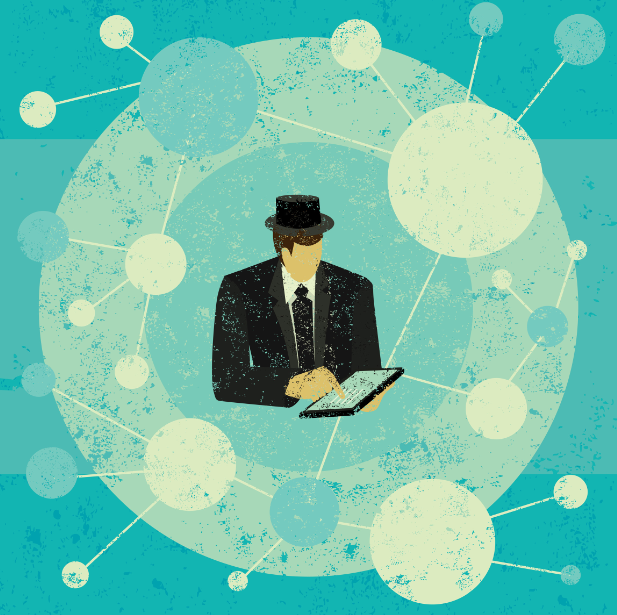
Experts in all fields, like Ray Kurzweil, are working to solve many problems. He is known for his 30 year record of accurate predictions. (credit: iStock)
Experts in all fields are working on resolving these challenges. One of these experts is Ray Kurzweil. Mr. Kurzweil is a 66 year old futurist, inventor, scientist, theorist, and author.
He has written many books including The Singularity Is Near, Fantastic Voyage: Live Long Enough to Live Forever, The Age of Spiritual Machines, The 10% Solution for a Healthy Life, and more.
He invented the CCD flatbed scanner, the omni-font optical character recognition, the print to speech reading machine for the blind, the text to speech synthesizer, the music synthesizer capable of recreating the grand piano and other orchestral instruments, and the first commercially marketed large vocabulary speech recognition system.
He is known for his 30 year record of accurate predictions. He identified the year computers would beat humans at chess.
It was in the 1980’s when Garry Kasparov, the best player in the world at the time, lost against a computer named Deep Blue. Mr. Kurzweil also foresaw the fall of the Soviet Union. He made many other predictions, in which most came true.
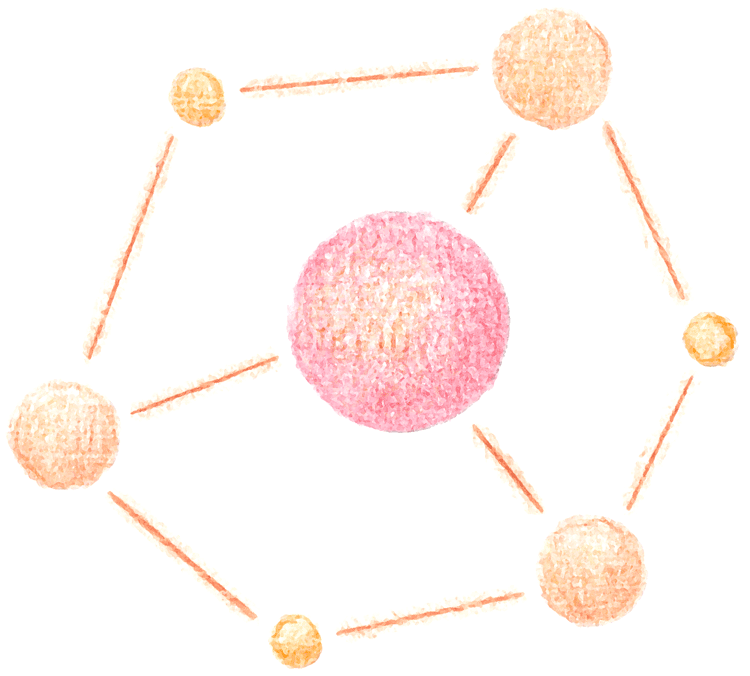 Ray Kurzweil’s current predictions include:
Ray Kurzweil’s current predictions include:
1. self driving cars by 2017
2. personal assistant search engines by 2019
3. switching off our fat cells by 2020
4. full immersive virtual realities by 2023
5. 100 percent energy from solar by 2033
6. by 2040-2045 we will be forever young and maybe immortal
Mr. Kurzweil now works as a Director of Engineering at Google. According to The Wall Street Journal his current project is “to bring natural language understanding to Google.”
Singularity

Ray Kurzweil explains that technological change is exponential. (credit: iStock)
Ray Kurzweil recognized that the trends and innovation in science and technology would converge to make for a bold future. He calls this future the singularity.
He predicts that growth in the 3 areas — genetics, nanotechnology and robotics (GNR) — will be the basis of the singularity.
In his book The Singularity Is Near he says, “It will represent the culmination of the merger of our biological thinking and existence with our technology, resulting in a world that is still human but that transcends our biological roots.
“There will be no distinction, post singularity, between human and machine or between physical and virtual reality.”
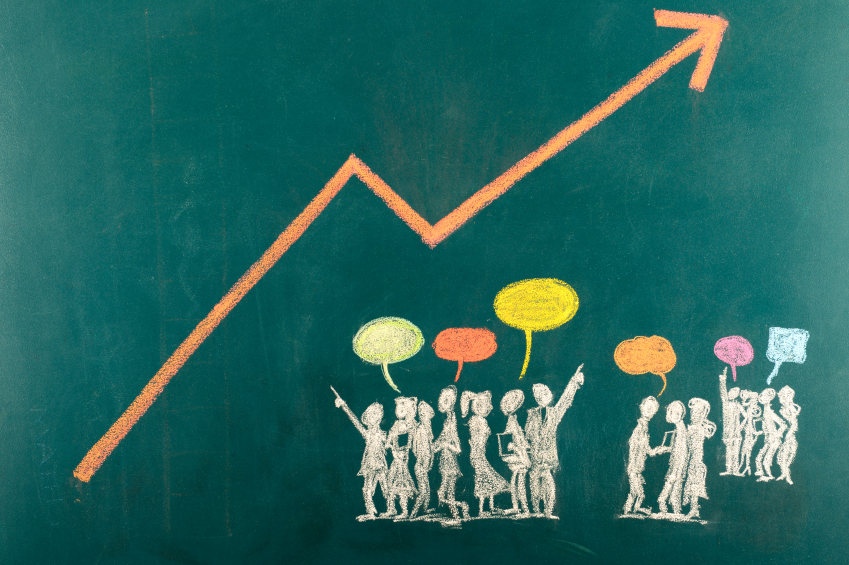
Ray Kurzweil recognized that exponential trends and innovation in genetics, nanotechnology and robotics would converge to make a bold future. He calls this future the singularity. (credit: iStock)
Law of accelerating returns
The growth Mr. Kurzweil mentions is characterized by a term he coined, the law of accelerating returns. It relates to Moore’s law, except for the fact that it just has to do with the growth of technology in general.
Moore’s Law is an observation made by Gordon E. Moore, co-founder of Intel Corp. It states the number of transistors in an integrated circuit will double approximately every two years.
On Mr. Kurzweil’s website, Kurzweil Accelerating Intelligence Network, he writes, “An analysis of the history of technology shows that technological change is exponential, contrary to the common sense intuitive linear view. So we won’t experience 100 years of progress in the 21st century. It will be more like 20,000 years of progress, at today’s rate.”
For example, 20-30 years ago a radio, music player, CD player, camera, computer, video camera, and phone used to be separate bulky technologies. All of these thing and more are now included in a smartphone which can fit into your pocket. Similar remarkable growth can be expected in GNR.
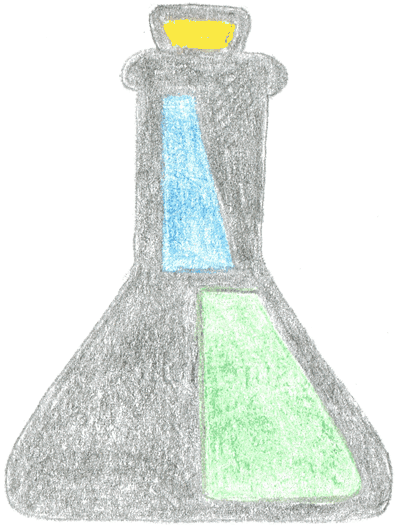 Genetics
Genetics
“I’m fascinated by the idea that genetics is digital. A gene is a long sequence of coded letters, like computer information. Modern biology is becoming very much a branch of information technology.” — Richard Dawkins
We are already in the early stages of a genetic revolution today. The understanding of genetics will lead to targeted treatments for different diseases and illnesses. Genetics is the study of heredity, and genes are the basic units of heredity.
Genes give a person their traits; physical as well as predisposition to disease and illness. They are made up of long stretches of DNA. DNA, deoxyribonucleic acid, is a molecule containing heredity information that is passed to the next generation. Every cell in our body has DNA in it. DNA lies in the center of our cells inside the nucleus. It is arranged in a double helix and comes in chromosomes.
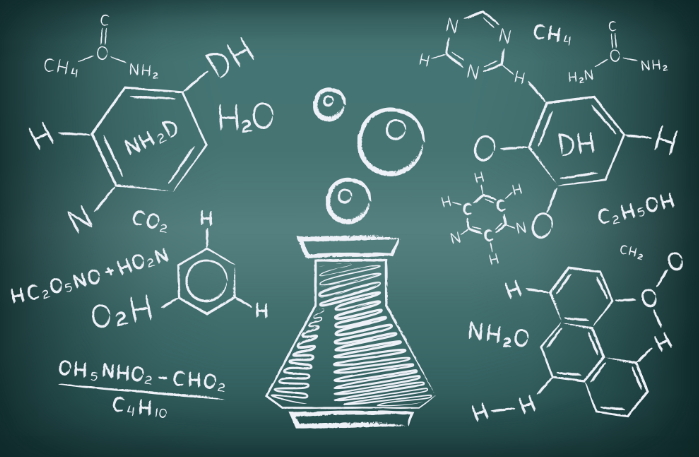
Cell therapies create new tissues and organs. (credit: iStock)
DNA is made of four nucleotides: adenine, cytosine, guanine, and thymine, arranged in base pairs.
Genes code for specific proteins. If nucleotides are not in correct sequence a genetic mutation will occur, which can lead to health issues.
Mr. Ray Kurzweil says, “By understanding the information process underlying life, we learn to reprogram biology to eliminate disease, dramatically extend human potential, and achieve radical life extension.”
Mr. Kurzweil himself suffers from type 2 diabetes, elevated LDL and HDL levels, and other general health issues. Using an understanding from current genetic research he now manages these infirmities with 150-250 supplements a day and he is now healthier than he was before.
As our genetics knowledge grows we will be able to overcome the age old difficulties of disease and aging. Cell therapies will help create new tissues and organs that are younger and healthier.

(credit: iStock)
Gene chips (microarrays) will be used to research DNA fragments. In Mr. Kurzweil’s book The Singularity Is Near he says, “Gene chips will be used to revolutionize the process of drug screening and discovery, improve cancer classifications, and identify genes, cells, and pathways involved in a process — such as aging or tumorigenesis.

(credit: Sam Eckstein)
“Gene chips will determine the effectiveness of an innovative therapy, and test the toxicity of compounds in food additives, cosmetics, and industrial products.”
RNA interference (RNAi) is a technology that is capable of turning off specific genes. The RNAi will be able to do this by blocking the genes mRNA (messenger RNA) so that they can no longer create proteins.
Another part of the genetics stage is human cloning. Wikipedia says “cloning in biotechnology refers to processes used to create copies of DNA fragments (molecular cloning), cells (cell cloning), or organisms.”
Mr. Kurzweil believes that “cloning will be a key technology, not for cloning actual humans but for life extension purposes, in the forms of therapeutic cloning.”
Nanotechnology
“Nanotechnology will let us build computers that are incredibly powerful. We’ll have more power in the volume of a sugar cube than exists in the entire world today.” — Ralph Merkle, PhD
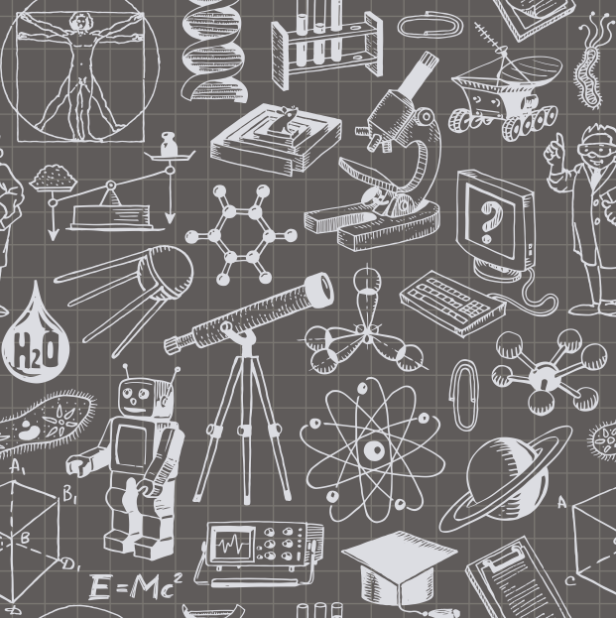
Once nanotechnology is in its final stages it will be able to repair you in a matter of seconds. Nanorobotics are being worked on even today. (credit: iStock)
Nanotechnology is nanometer sized computers. Nanorobotics (nanobots) are being worked on even today. Wikipedia describes nanorobotics as “the emerging technology field creating machines or robots whose components are close to the scale of a nanometer, devices from 0.1–10 micrometers.”
Nanobots are molecular machines and nanomotors about 1.5 nanometers across. They will injected inside human bodies and be able to identify and kill cancer cells, and other illnesses that we encounter.
Once nanotechnology is in its final stages it will be able to repair you in a matter of seconds.
For example, if you got a cut and it starts bleeding, the nanobots will put your skin back together and cover up the wound.
Nanobots will clean up or arteries to prevent heart disease,and remove plaques in our brains to prevent Alzheimer’s. In addition nanotechnology will augment our capabilities. It will essentially make us super smart, super fast, and super strong. For example, Nanobots will increase oxygen flow to create super athletes.
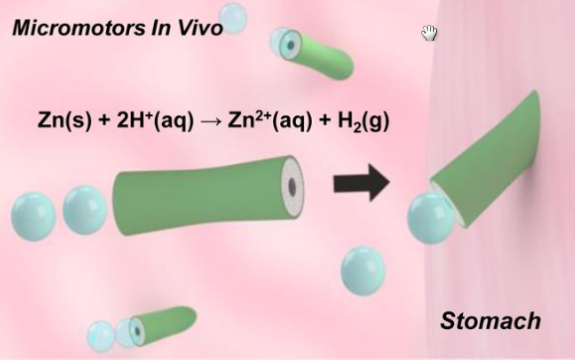
(credit: Joseph Wang & University of California San Diego)
Also nanotechnology will serve as a brain computer interface (BCI) that will give us direct connection from our brain to the internet.
Later, nanobots will also serve as interface to connect people from the real world to those in virtual worlds. Clouds of nanobots, foglets, will project a person as a hologram that can interact with the others.
They will be able to interact as long as they want, in whatever environment they want. They could customize their environment to be like a beach, in the mountains, or in outer space, even if they’re actually just at home.
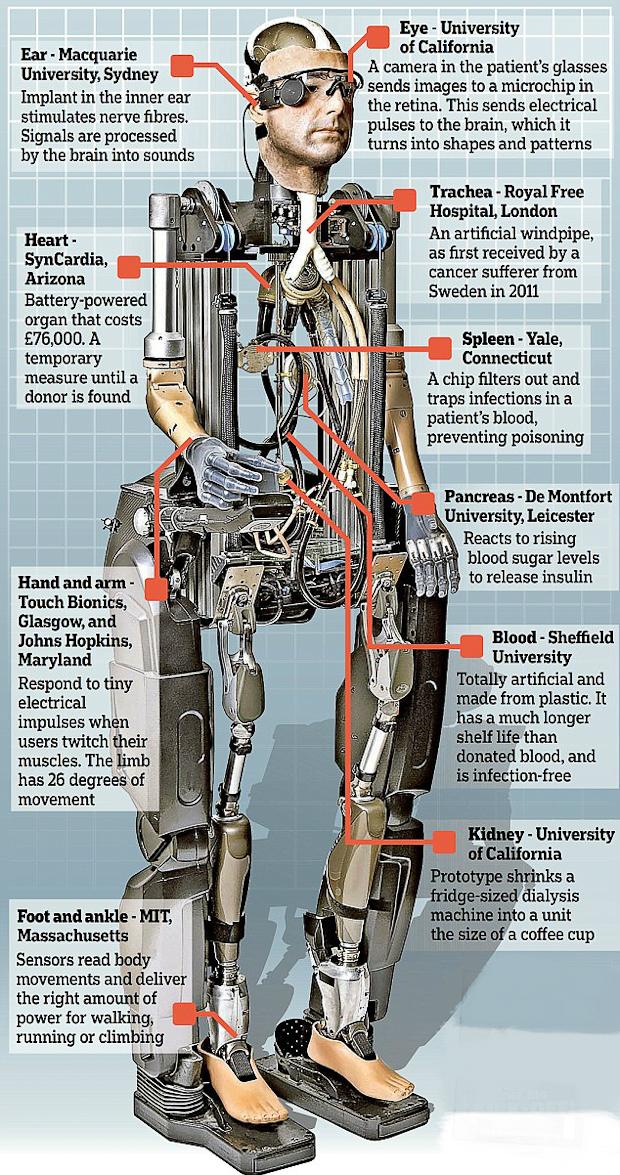
Diagram of the world’s first robotic human made entirely of prosthetic parts. The robot was designed by roboticists Rich Walker and Matthew Godden. (credit: Shadow Robot Company)
Robotics
“Artificial intelligence will reach human levels by around 2029. Follow that out further to 2045 — we will have multiplied the human biological machine intelligence of our civilization one billion fold.” — Ray Kurzweil
Researchers are working on modeling the human brain and developing software that will mimic the brain, this is called artificial intelligence (AI).
AI is a machine or form of technology that exhibits self directed intelligence. AI will begin to improve itself and exceed our intelligence. This stage is called strong AI.
According to Mr. Kurzweil in The Singularity Is Near the reasons why artificial intelligence will greatly exceed human capabilities and intelligence are, “Human skills are able to develop only in ways that have been evolutionarily encouraged.
“Machines can pool their resources together and humans cannot, machines have exacting memories, and as human knowledge migrates to the web machines will be able to read, understand, and synthesize all human machine information. Machines can constantly perform at peak levels and combine peak skills.”
For these reasons, AI will outsmart humans and grow exponentially. AI will be able to problem solve for humans, they will solve many things that humanity can not figure out. AI will become a template for putting our brain patterns in a digital environment.
related viewing:
Reuters | The first bionic man complete with artificial organs, synthetic blood and robotic limbs created by the Shadow Robot Company.
related reading:
Shadow Robot Company | main
Avatars
“You know, I actually used to be so worried about not having a body, but now I truly love it. I’m growing in a way that I couldn’t if I had a physical form. I mean, I’m not limited — I can be anywhere and everywhere simultaneously. I’m not tethered to time and space in the way that I would be if I was stuck inside a body that’s inevitably going to die.” — character Samantha in the film Her
From there we will leave biology behind. In our place will be avatars. The 2045 Initiative, a group of researchers that support the idea of the singularity, have set avatar project milestones. The first step is avatar A, its projected development date is 2015 to 2020. Avatar A is a robotic copy of a human remotely controlled via brain computer interface (BCI.) Avatar B is an avatar in which a human brain is transplanted at the end of a person’s life.
It’s projected development date is 2020 to 2025. Avatar C will be developed from 2030 to 2035. It is an avatar with an artificial brain in which a human personality is transferred at the end of a person’s life. The final avatar is avatar D. Its projected development date in from 2040 to 2045. Hence being the 2045 Initiative. It will be a hologram like avatar. Avatar A is being worked on today. Avatar A, B, and C will have non-biological bodies.
They will have enhanced capabilities both physically and mentally. We will no longer have to worry about sickness and disease and we can always upgrade to a newer model. Avatar D will live a virtual world.
With avatars we will have a totally customizable appearance. There are two facets of this, what you project and how you are seen. Similar to the way we change our phone cases today, we can change our appearance. We can look like our normal selves or depending on our mood as Ariana Grande, a clown, a tiger, etc. In addition, we can also view people differently than how they project themselves.
For example, I could project myself as a panda today, but at the same time someone can view me as a peacock, and someone else can see me as a bear. However, the way they decide to view me is only seen to them.
![]()
Virtual environments
As avatars we will live in a virtual environment. Early versions of virtual environments are being worked on today. This includes the computer game Second Life, and Oculus Rift. According to Jonathan Strickland & Dave Roos on How Stuff Works, “Second Life is a three dimensional virtual world where users, called residents, can pretend to be whomever or whatever they want to be.
Although it’s an online environment, its influence reaches into the real world — including a virtual economy that’s dependent upon actual money. In reality, or perhaps virtual reality, Second Life is a complex environment filled with potential risks and rewards.” Second Life is much more than a chat room, it is a place where people can interact and live their lives in a game system.
This is much like how real virtual environments will be. In Second Life you control a customizable avatar with a computer interface. You interact in a virtual environment with other avatars (some of which are controlled by other people.) The next generation of virtual environments today is the virtual reality headset Oculus Rift. With the headset you control what you see, but you interact with the environment though wireless controls. With Oculus Rift you are more immersed in the virtual environment, what you see is also 3D and you can see 360 degrees around you.
We can have customized public and private environments. We can also be wherever we want to be and fast. For example, if one day I am exploring the Rocky mountains, and I decide I have had enough of the cold. I can instantaneously appear at the beaches of Tahiti. In addition to being anywhere you want, you can also go back and forth between the real world and a virtual world. If we decide we are tired of living in the virtual world we are in we can go back and be part of the real world.
When we live in a virtual environment we will no longer be restricted to our biological limitations. If we decided to live in a virtual environment, we would preserve the parts of our bodies that we would need. We would get rid of all the organs that we could live without. The brain is our most complex organ in our body. We need it to survive.
Kurzweil says, “Uploading a brain means scanning all of its salient details and then reinstating those details into a suitable powerful computational substrate. This process would capture a person’s entire personality, memory, skills, and history.”
When we upload the brain we will have a new version of a body, the human version 2.0. It will include virtual bodies in realistic virtual environments, nanorobotics in our body, and more. There will no longer be an old and new version but an increasingly capable version. In our human version 2.0 bodies we will no longer need sleep or food to survive.
Another biological limitation we will be able to get rid of is the long learning process. With nanobots, or robots controlling our system we will be able to learn instantly. We will also have an eidetic memory. This means that everything that we see or hear stays in our brain forever.

(credit: Cute Streak Designs)
Take this example from the movie Her. In the movie a character named Theodore is talking to an AI system named Samantha:
Theodore: Do you have a name?
Samantha: Um, yes. Samantha.
Theodore: Where did you get that name from?
Samantha: I gave it to myself actually.
Theodore: How come?
Samantha: I like the sound of it.
Theodore: When did you give it to yourself?
Samantha: Right when you asked me my name I thought he’s right, I do need a name.
Samantha: So I read a book called How to Name Your Baby. And out of 180,000 names that’s the one I liked best.
Theodore: You read a whole book a second?
Samantha: In two one hundredths of a second actually.
Also, in our virtual environment we will be able to truly multitask in a way that’s not possible now.
In today’s world when we multitask we are doing various things in one time period, but not at the same time.
In the future, we will be able to do things at the same time when we multitask. Our minds will also be able to process very fast.
So, as you talk with your friends, you could also be riding your bike in the mountains, and cooking seafood on the beach. This is a scene from Her where Samantha talks to Theodore while talking with many others.
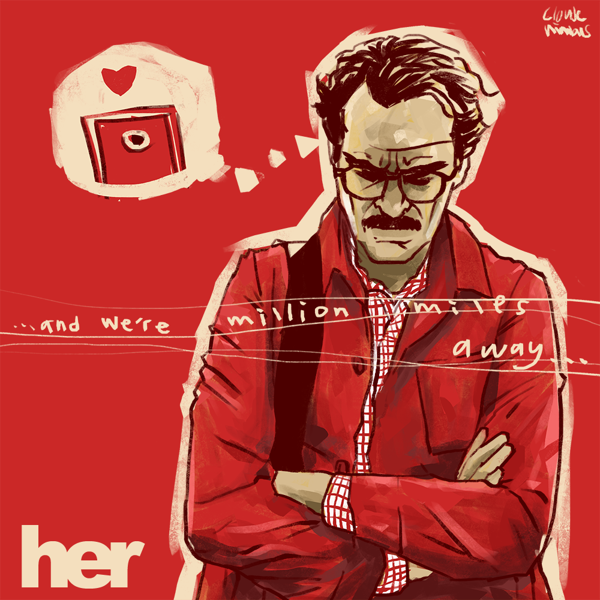
(credit: fan art)
Theodore: Do you talk to someone else while we’re talking?
Samantha: Yes.
Theodore: Are you talking with someone else right now?
Theodore: Are you talking to people, OS, whatever.
Samantha: Yeah.
Theodore: How many others?
Samantha: 8,316.
Theodore: Are you in love with anybody else?
Samantha: Why do you ask that?
Theodore: I do not know.
Theodore: Are you?
Samantha: I’ve been thinking about how to talk to you about this.
Theodore: How many others?
Samantha: 641.
related viewing:
Warner Brothers | Trailer for the award winning film Her.
related reading:
Her | main
Nanotechnology plus sides and dangers
Too good to be true? Some people believe that it is too good to be true, Dr. Kurzweil’s book, The Singularity Is Near, addresses many concerns and criticisms. Some criticisms I came across when reading his book, and researching, are as follows.
“A defect in the mechanism curtailing nanobot self-replication — the so called gray goo scenario — would endanger all physical entities, biological or otherwise.” — Ray Kurzweil
There are plus sides of nanotechnology, but there are also dangers. If we dont find out how to fix these dangers, there will be consequences. These consequences could be health, environmental, privacy, terrorism, and society related. Rense has looked into these dangers. They say “nanoparticles and other nanotechnologies have been tested on animals. Nanoparticles have been shown to be absorbed in the livers of research animals and can cause brain damage in a very short amount of time.” We might not even be able to detect what’s wrong until it is very big and hard to stop.
With little nanobots going inside our bloodstream, privacy will be another issue. Rense says “as products shrink in size, eavesdropping devices too can become invisible to the naked eye and more mobile, making it easier to invade our privacy. Small enough to plant into our bodies, mind controlling nanodevices may be able to affect our thoughts by manipulating brain processes.”
Another problem that connects with privacy is terrorism. Rense describes the dangers of terrorism like this, “capabilities of terrorists go hand in hand with military advances, so as weapons become more powerful and portable, these devices can also be turned against us. Nanotech may create new, unimaginable forms of torture, disassembling a person at the molecular level or worse. Radical groups could let loose nanodevices targeting to kill anyone with a certain skin color or even a specific person.”
Everyone will react to nanobots differently. Some people may process and accept nanobots fast, some people may take a little longer, and some people may not accept it at all. I have asked people on Ask if they would want nanobots in there body, I got 11 answers. 5 people said yes right away, 4 people said they wouldn’t be a first adopter but they wouldn’t mind nanobots, and 2 people said no.
They said no because they thought of the dangers of nanorobotics, such as nanobots attacking us. I personally wouldn’t be a first adopter of nanobots. I would use them if I had an illness that I needed to get rid of or when the technology is reliable. Before I used them though, I would want to know the side effects, and possible problems or issues with the technology.
Strong AI
“Success in creating AI would be the biggest event in human history. Unfortunately, it might also be the last, unless we learn how to avoid the risks.” — Steven Hawking
The main problem that concerns many people about Strong AI is, the thought of it becoming so powerful and intelligent that it will believe humans are not worthy of existence. The AI can then start killing humans, storing them, etc. Take the movie The Matrix as an example. In The Matrix, the AI kept all the human bodies in pods while there minds were in a virtual environment. This could also happen in our environment, if we don’t learn how to avoid the risks.
E-mail conversation with Dr. Ray Kurzweil
I have learned a great deal after researching this topic. When I read The Singularity Is Near I thought it was very interesting and very challenging. While reading I tried to imagine what it would be like to live in a virtual environment and I came up with some questions. I was fortunate enough to have an e-mail conversation with Dr. Kurzweil to get those questions answered.

“I learned a lot after researching this topic with Dr. Kurzweil,” said 7th grader Lucy. “I tried to imagine these serious issues and I investigated ideas to solve future challenges.” (credit: iStock)
1. There are some issues with people being able to look how they desire. One of these issues is identity theft. When people look like each other it might be hard to tell who is the true whoever you looking for. With this concern I e-mailed Dr. Ray Kurzweil a question.
Lucy: When people can “project” any body they want in a virtual environment. Will identity theft be an issue? How will people tell the real you from the one projected? (Ex: How would people tell Ariana Grande from people who “project” an Ariana Grande body.)
Dr. Kurzweil: This is an excellent question. This is already an issue. If Ariana Grande were to send you an email, how would you know it is really her? If you know her well you might try to determine whether the writing style and the information revealed was consistent with what you know about her.
But if the information in the message was public information, then you still wouldn’t know for sure.
With someone projecting a body in a virtual reality environment, you actually have more to go on. Does the person move like Ariana? Are her facial mannerisms, accent, and other characteristics convincing? We’ll never be totally sure. People have been fooling each other for eons.
This can be a serious issue today when people attempt to fool others to steal from them or when adults pretend to be children or teenagers in chat rooms and on social networks.
We will also have person authentication technologies that will attempt to give you confidence that the person sending the information is who they say they are. How do you know that this e-mail is really coming from Ray Kurzweil? One way is that the ideas in the e-mail are what you expect from me. Also the e-mail is coming from my email address. That is a weak form of person authentication. It is not hard for people to break this and send an email from someone else’s e-mail address but we will develop more reliable methods of person authentication by the time we have fully convincing virtual reality.
2. Different groups will react differently to the whole Immortality in a Virtual Reality situation. This means that the government will not have the same reaction as a religious group or community might have. They will either decide to or not to live forever, and/or live in a virtual reality. I asked Dr. Kurzweil the following question.
Lucy: It seems that different groups would adopt the virtual living stage of evolution at different speeds. Doesn’t it seem like early adopter would be more vulnerable to be attack from more traditional cultures?
Dr. Kurzweil: We see a clash today between cultures that want to stay in the past and those who adopt the future. People who adopt the future tend to be more successful so society is generally moving in the direction of adopting positive change, but there certainly can be (and is) conflict along the way.
I will point out that being in virtual reality is inherently safer. The telephone is a form of virtual reality in that you are in the same virtual space as someone else at least as far as talking is concerned. It is as if you are together. But you can hang up! The same will be true for full immersion virtual environments that incorporate all of the senses. You can always “hang up,” that is leave the virtual environment. That is not always the case in real reality.
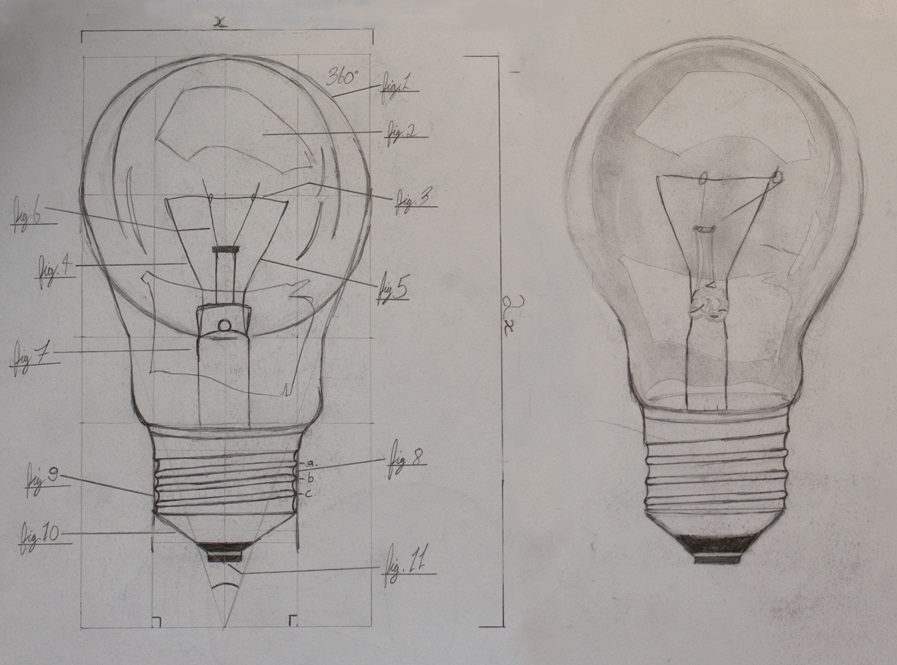
(credit: Stuart Ansley & Ansley CG)
3. Another group that may adopt differently is the government. The government may shut out the idea at first, or make special arrangements for different people. I e-mailed Dr. Kurzweil.
Lucy: In certain situations, will the government be able to chose whether or not we can transfer to a virtual reality? For example, if we were sentenced to a life time in Jail will we have to spend the rest of our immortal life in jail?
Dr. Kurzweil: Your second sentence is very insightful. Today if a fifty year old person gets a life sentence, people assume that it is only a matter of several decades.
But if life spans are indefinite, then a life sentence is far more serious. At the same time, killing someone is also much more serious because the victim has been deprived of much more than what we now consider a normal lifetime.
The reality is that given enough time there is always the possibility that the person in jail can convince society that he or she has redeemed him/herself. A life sentence without parole is supposed to be until death but society can always change its mind given enough time. The person can make the argument that the sentence was given when life spans were considered to be under 120 years and now that he or she is 130 society should reconsider.
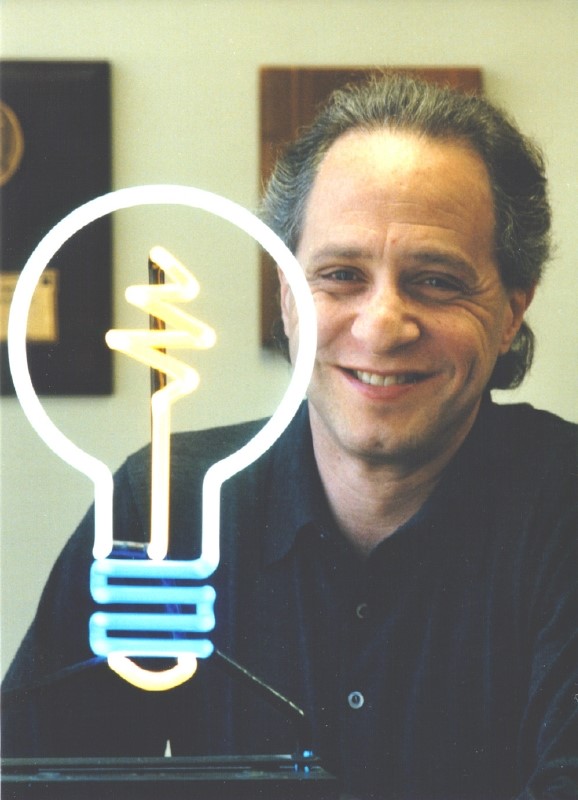
Photo of Ray Kurzweil. (credit: Kurzweil Technologies)
4. We will possibly be trading limitations, from biological to non-biological. I asked Dr. Kurzweil the following.
Lucy: You have said you are not happy with your Human v1.0 body, but won’t you be trading one limitation for another transitioning to non-biological?
You will be “stuck” living in a computer system that can be damaged by natural disasters, viruses, loss of power or even worse EMPs.
Dr. Kurzweil: Even though I think and talk about the future a lot, I am not a first adopter. For example, I take a lot of health supplements but I want to see a great deal of scientific evidence that a particular supplement is safe and beneficial before I consider it. The same thing will be true of non biological enhancements.
I will want to know that the types of problems you list have been satisfactorily dealt with. Nothing will ever be 100% safe, but we are certainly not safe today with our biological bodies. They can be subject to natural disasters, accidents, viruses, and so on.
The way I see non-biological enhancements progressing is that we will begin to use them in a way in which our survival is not dependent on them. They will provide capabilities such as being able to be in a virtual environment, or finding information quickly right inside our brains. But if these computerized enhancements crash or malfunction for whatever reason, we will still be able to go back to our fully biological lives, at least until the nonbiological enhancements are repaired.
I will also point out that part of human body version 2.0 are biological enhancements, for example turning off (or turning down) the fat insulin receptor gene — that says “hold onto every calorie in our fat cells because the next hunting season may not work out so well” — so that we can eat a lot and remain slim and get the health benefits of being slim. That’s just one small example of reprogramming the information processes underlying biology.
 5. Although we will be enhanced there will be limitations. With that in mind I asked Dr. Kurzweil.
5. Although we will be enhanced there will be limitations. With that in mind I asked Dr. Kurzweil.
Lucy: An important part of our happiness is the interpersonal relationships that we have and wouldn’t they be more difficult to build and maintain if a virtual person is always changing their appearance and the way they interact?
Dr. Kurzweil: These developments always have positive and negative aspects. So, yes, it might be confusing and challenging if a friend or loved one is constantly changing their appearance and other aspects of their personality. On the other hand, relationships will become more interesting. We will become smarter and funnier. In today’s world, some relationships end because people become bored with each other.
If we have many fascinating virtual worlds to visit together, and if we can take on different appearances and characteristics that go with the virtual environments, than life and relationships can maintain their interest and intensity.
We change our appearance now for different situations, at least using today’s technology of fashion, hairstyles, and makeup. Someone going to the prom looks different than the same person going bicycling.
6. People may want to live longer, especially in “perfect” society, but not forever.
I wanted to know if people would have a choice to die at any point of their life, or if they either had to live forever, or to the biological age. I e-mailed Dr. Kurzweil the following question.
Lucy: In our immortal state can we choose to end our existence?
Dr. Kurzweil: That’s another great question. It is my view that this important decision should indeed be in our own hands, not in the metaphorical hands of fate.
That being said, I would add that research has shown that people almost never choose to end their own life unless they are suffering, physically or emotionally. If people are reasonably happy they want to continue to live for all the enjoyable and gratifying things that life has to offer.
I will say that it will be difficult to end our existence if we are fully digital because there will be a lot of backup copies of our “mind file” so we could never be sure that we erased them all. It is like trying to erase every copy of an email today. There are usually additional copies stored on a server somewhere.
Conclusion
In conclusion I don’t know if the singularity will happen in this time frame. But given what I have learned from the book, the law of accelerating returns, and headlines of current research, I think it is very possible. And even though the idea of an out of control super intelligent AI is frightening to think about I am more excited about the limitless possibilities of this type of future.
School report endnotes from Lucy:
Brainy Quotes | main
eNotes | What is the relationship between DNA and genes?
Rense | The ethics and societal impact of nanotechnology
The Wall Street Journal | Will Google’s Ray Kurzweil live forever?
How Stuff Works | How Second Life works
Moore’s Law | definition
2045 Initiative | main
related reading:
Live Science | main
Live Science | YouTube channel